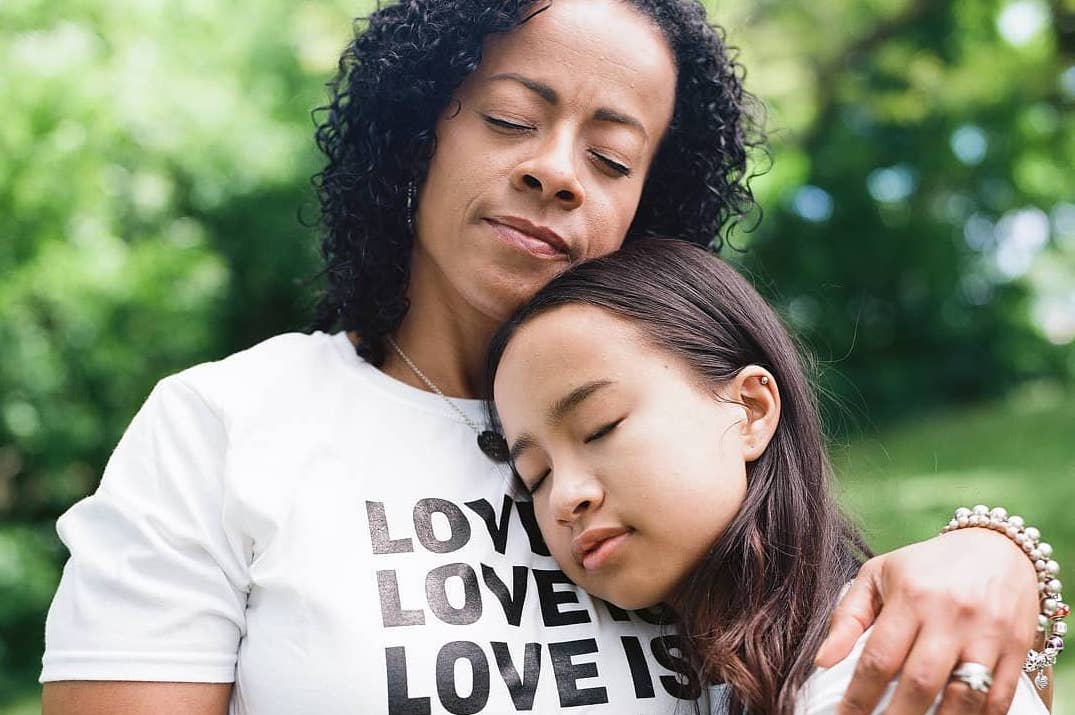Do you wonder what to say and what not to say when your child is stressed or anxious?
Do you feel like what you are saying is making it worse?
Whenever your child or teen is having any strong emotion, the first thing to do is to check your own thoughts and emotional state.
Don’t mirror their emotion and get sucked into it yourself. If you find your stress response getting triggered or emotions rising, you’ve got to bring yourself back down to be able to support your child.
Start with slow breathing, tune into the present moment with your senses and check your thoughts.
If you notice thoughts like these, let them go, don’t believe them, don’t give them any time because they are just thoughts you don’t have to believe:
- “This is horrible/scary and I don’t know what to do.”
- “She’s never going to figure this out.”
- “This will ruin her future.”
- “This always messes up our plans.”
- “This is going to take forever.”
- “I hate this.”
Instead, tell yourself thoughts like these – because you can believe anything you want and why not these!
- “Its fine for them to be upset/stressed/anxious”
- “This isn’t a problem”
- “I know how to help her”
- “All I need to do is stay calm myself and help her feel safe to ride the feeling out”
- “I can do this.”
- “She’s learning how to manage her anxiety. This takes time. I’ve got time for this – Its important.”
Here’s what you don’t say to your child: These types of statements invalidate the child’s feelings/fears and can add feelings of inferiority and inability and unwillingness to try. It can also increase the anxiety and stress.
- “We don’t have time for this, stop it!”
- “You always do this, you know better.”
- “When are you going to get brave/tough enough?” “pull yourself together”
- “this isn’t scary, just do it”
- “I’m tired of this, you’re old enough, stop it.”
- “stop crying and just do it”
- “There’s nothing to be scared of.” Or “This isn’t scary or worth crying/worrying about”
- “You’re ok. You’re fine”
- “Don’t worry”
- “Think happy thoughts”
Here’s what you say to your child: These types of statements validate the child’s feelings/fears and help them feel safe and willing to work through the thoughts and feelings they are experiencing. It normalizes the feelings.
- “Its ok to be anxious. This isn’t a problem. We got this.”
- “you are safe. I love you.”
- “it looks like you are feeling anxious. What does it feel like? Are you hot and sweaty?”
- “I’ve felt scared/anxious before. It can feel yucky”
- “are you willing to talk to the anxiety and take charge?” “you are brave”
- “Your brain thinks you are in danger and is trying to protect you. Thanks brain!”
- “What you are feeling is just chemicals moving through your body. This won’t hurt you.”
- “I’m feeling anxious too, let’s slow our breathing down together, ok?” Or, are you ready to try slowing your breathing with me?
- “I’ll count with my fingers, ready, in, 2, 3, 4, hold, 2, 3, 4, etc.”
- “You’ve got a lot of energy in your body, would you like to run around or do some push ups or dance with me?”
- “Will you step outside with me?”
- “How can I help you feel better?”
- “What’s one thing that has helped before that we can do now?”
Are you ready to work on your thoughts about your child or teen’s anxiety? Or your own anxiety? Let me help you.
Gozen.com is one of my favorite resources on anxiety for kids, along with this article, a reference for today’s post.
I’m doing free sessions for missionaries and parents. Schedule a time for a FREE session. Have a quick question? Shoot me an email at info@jillfreestone.com. I’d love to hear from you.




